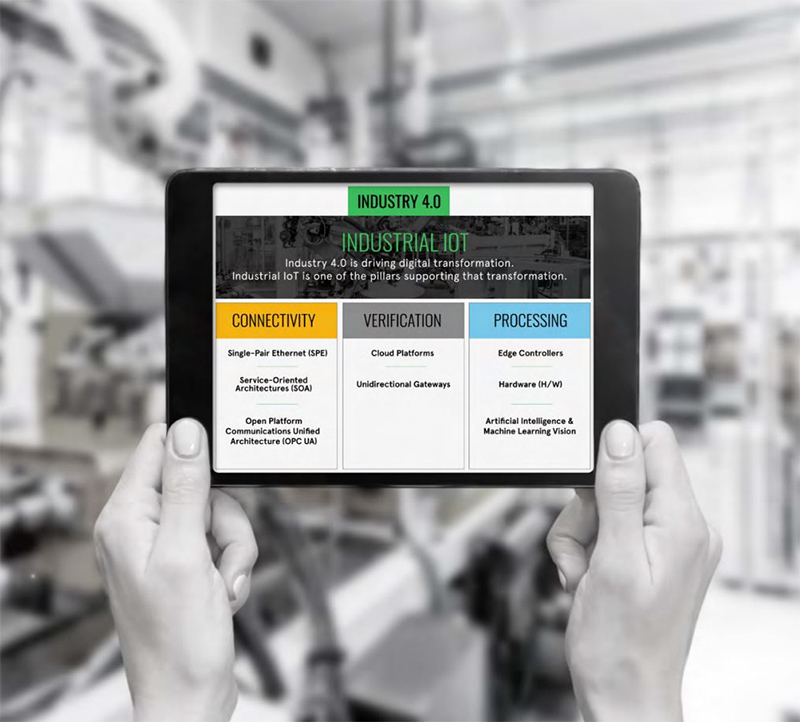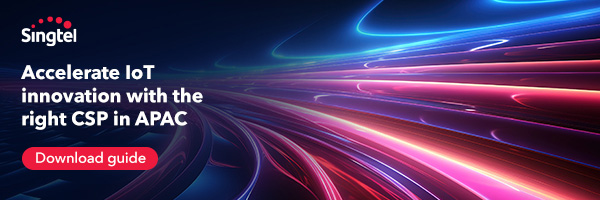
The IoT now touches every aspect of modern life, in every nation. Its accessible nature means it has impacted and improved lives everywhere. This is being felt most strongly across industrial sectors.
The Industrial IoT underpins Industry 4.0. This quiet revolution is getting louder, changing not only the way individual companies work internally but how they collaborate with each other. The IIoT creates a new kind of connection between vertically and horizontally integrated manufacturing companies and suppliers.
Apart from the technical implications of that, there are wider considerations. Choosing not to embrace Industry 4.0 and the IIoT is rapidly becoming a moot point. How to embrace it is now very much the topic of discussion.
Building a business case for the IIoT isn’t necessarily easy, as it will require new ways of calculating capital and operational expenditure. It will depend on the age of equipment and the cost of replacement or upgrading. Eventually all manufacturers will be part of the IIoT, at least at some level, but it will take some longer than others.
If the end goal is the same, how you get there depends on where you start from. Not all companies will be new to the IIoT, but most will be new to at least some of the practices. There are mid to long-term trends emerging that manufacturers will need to consider. This includes the impact of disruptive but complementary technologies, such as additive manufacturing.
These topics are covered in more detail in an Avnet White Paper ‘A top-down analysis of the Industrial IoT’, and article The Industrial IoT is driving economic growth (avnet.com). Both are part of Avnet’s wider resources supporting the Industrial IoT.
On-demand manufacturing
Other challenges are emerging, which are a direct result of the IIoT. This includes a ‘manufacture on demand’ approach to mass production. Consumer habits indicate a growing demand for more customization. While modern, connected and ‘smart’ factories may be able to accommodate this demand, it has the effect of reducing volumes. Part of the reason why industry works is because volumes are high, using equipment designed to manufacture the same thing over and over. Change is not the friend of high-volume manufacturing.
Although there are obvious challenges, the financial incentive is huge. Countries stand to benefit from growth in the region of trillions of US dollars. This figure is comparable to the new resources that will need to be installed. Sensors, the manufacturing heartland of data, will be deployed in their billions. This is driving change in the infrastructure and its associated solutions.
All this data needs to be processed. Much like a manufacturing production line, data will need to be inspected, analyzed, and put to good use. The impact artificial intelligence will have here is hard to quantify. Current developments indicate that the intelligence is moving closer to the data, to reduce latency and the burden of moving large files around a network and the internet.
The information technology (IT) and operational technology (OT) domains are colliding to make this vision a reality. Interfacing these two worlds requires new solutions, both technical and operational. Innovations here include new protocols that speak both languages, and new platforms that accommodate IT and OT demands.
The IIoT is a simple concept
Conceptually, the IIoT is simple. It involves capturing information and turning it into actionable data. This masks the reality; that change comes with risk. Successful and profitable manufacturing facilities rely on a careful, almost delicate balance between risk and reward. The IIoT provides demonstrable rewards but the risk must also be quantified.
Digital transformation is happening everywhere. Another key trend that will impact manufacturers is the shift towards a service-based economy. This shift is accelerating, not least because leaders in this field already recognize the value in developing new services. It requires more than just good intent to move from a product-based business model to a service-based revenue stream. The IIoT is enabling that evolution. This will result in hybrid approaches that must coexist, at least initially and possibly for the long term.
At its core, the IIoT relies on the same electromechanical, hardware and software components that enable all modern life. As a leading distributor working with a broad supplier base, Avnet also provides design services to help its industrial customers throughout their digital transformation journey.
Avnet has been doing business the right way since 1921. It has over 1,800 FAEs available to customers, support from its extensive engineering communities, subject matter expertise and access to the latest development kits. These resources will help you move from proof of concept to production faster. Avnet supports you through rapid prototyping and small volume production.
Customers have access to over a century of experience in supply chain management, to ensure your production scales. We provide assurance of supply and flexible inventory programs through a global distribution and logistics infrastructure.
Avnet’s capabilities cover technologies and solutions, design services and expertise, and supply chain and logistics. Accelerate your digital transformation to the IIoT with Avnet.








